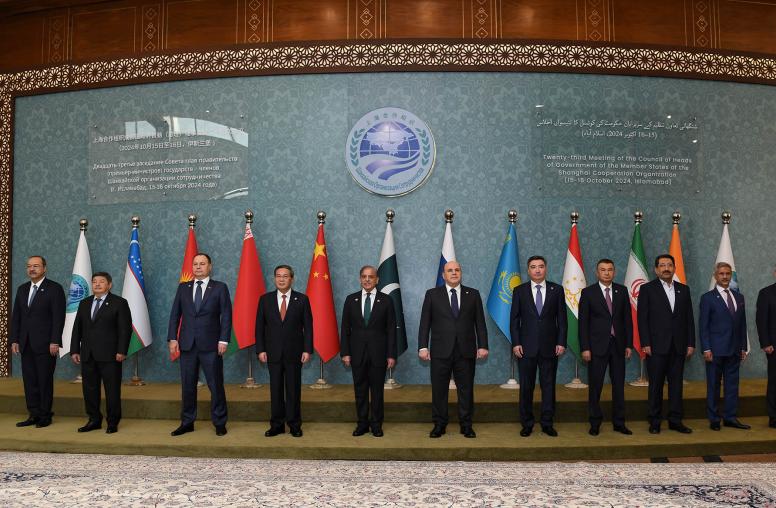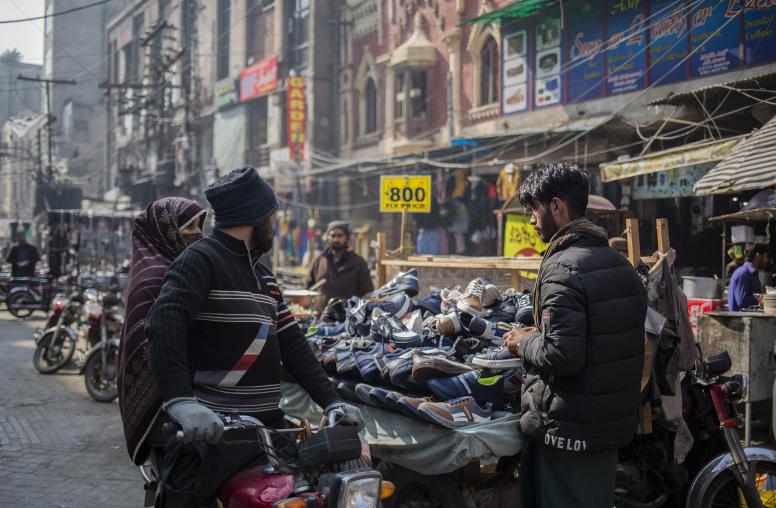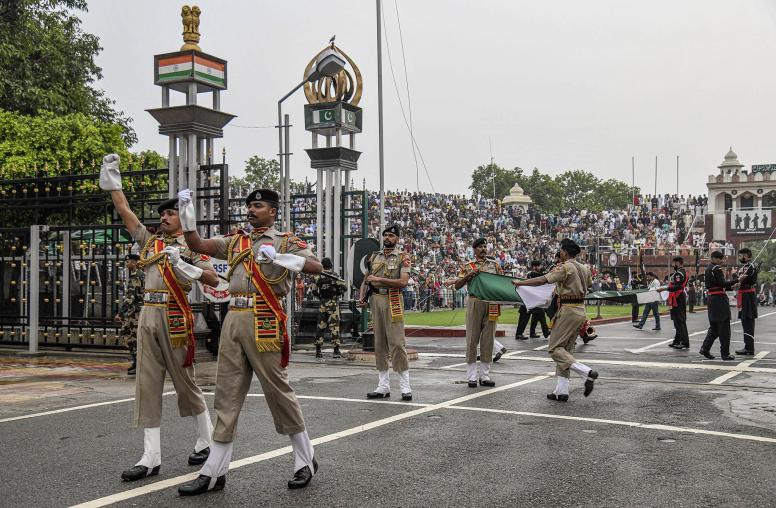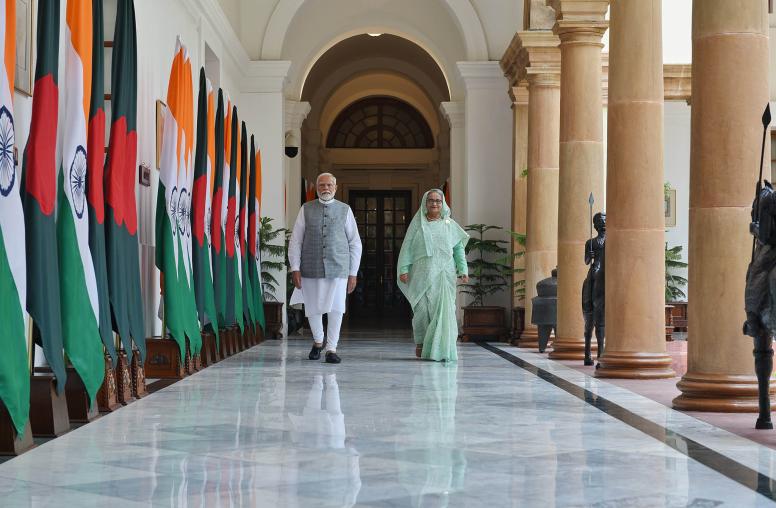PakVotes: A Social Media Experiment in Elections Monitoring
PakVotes, an experimental project run by a Pakistani NGO and supported by USIP, brought social media platforms together with a network of reporters to track violence during Pakistan’s 2013 elections. The experience offers lessons for the future use of social media to publicize conflicts and violence during elections and other major events.
Summary
- PakVotes, a pilot project supported by the U.S. Institute of Peace (USIP), used social media platforms and a network of reporters located in areas outside of major cities in Pakistan to track violence during the 2013 elections.
- The project offers lessons that could guide future efforts to use social media to record and publicize conflicts and the use of violence during elections and other major events.
- The hashtag #PakVotes trended for several days around elections, serving as a popular alternative news source to the mainstream media, which was not as diverse in its geographic coverage, sources or story types.
About this Brief
During Pakistan's May 2013 general elections and by-elections three months later, USIP supported an experiment called PakVotes, designed by the Pakistani nongovernmental organization Bytes for All (B4A) to increase the flow of information from "information dark" areas through a network of social media reporters. Information darkness referred to districts of Pakistan that are relatively remote, offline, conflict-prone and do not receive regular coverage by mainstream media. The pilot project was designed to correct for commonly identified vulnerabilities of social media reporting during major national events, particularly elections. This Peace Brief assesses the PakVotes experiment and suggests how it might provide a model for using social media to diversify and improve the quality of information around major national events. Nadia Naviwala is USIP's country representative for Pakistan. She leads USIP's Peace Innovations Fund for Pakistan and peaceful elections programming.
PakVotes: An Introduction
Social media have empowered citizens to function as reporters during major national events. Thanks to smartphones and platforms such as Facebook, Twitter and YouTube, citizens have been transformed from consumers of information to producers, and from victims to witnesses.1 Yet the value of citizen reporting is also questioned for its reliability, its limited reach in places where it is mostly elites and urban populations that have smartphones and computers and its real-world impact.
The Twitter hashtag #PakVotes was the top trend associated with the May 2013 general elections in Pakistan. But different from most trends that emerge on social media, this one was linked to a professionally-managed PakVotes Twitter handle, Facebook page, blog and online map. The heart of the effort was a social media newsroom in Islamabad that received reports from a network of citizen reporters who were trained and equipped with Android smartphones and operated in ten relatively offline, under-covered and conflict-prone districts of Pakistan. The PakVotes team systematically verified and shared information on its various platforms.
Based on lessons learned from its work during the general elections, PakVotes fine-tuned and re-ran the pilot during by-elections that were held on August 22. Those by-elections were held to fill seats vacated by candidates who won more than one constituency or where the previous results were rejected by the Election Commission. This time, citizen reporters were replaced with professional reporters affiliated with local media outlets in each of the 41 constituencies where by-elections were held.
Manage, Then Share
While the Pakistani nongovernmental organization Bytes for All (B4A) was eager to use social media tools to improve the flow of information around elections, it acknowledged the vulnerabilities of citizen reporting and considered them in the PakVotes program's design. Unlike most social media experiences, the PakVotes platform emphasized information management—in terms of its sources, reliability and utility—over simple information-sharing.
Due to technological and language barriers in Pakistan and many other countries, the urban, English-speaking, smartphone-equipped elite can be overrepresented in the use of social media (especially Twitter). Yet the objective of PakVotes was to use social media to bring news of developments in marginalized, typically offline areas of the country to the entire nation. By training and equipping citizen reporters with Android smartphones in such "information dark" areas, and linking them to online platforms with national reach, PakVotes circumvented the elite and urban bias characteristic of social media use.
A recognized problem with citizen journalism is the dissemination of unverified reports. During elections, social media are particularly prone to manipulation by political parties, candidates and party supporters. To control for this tendency, B4A trained its network of reporters in ethical journalism, social media ethics,2 information verification and safety. The central team in Islamabad performed quality-control checks on information coming in from its reporters. The central team ensured that the reports that were ultimately shared were verified in person and through secondary sources.
With respect to information coming from other social media users, the central team employed informal network analysis, based on its familiarity with online personalities and ability to detect paid-for versus authentic posts, in order to discern biases and credibility before re-posting. During the second trial of PakVotes during the by-elections, mainstream media reports were also verified by the ground network before being shared.
As a result of this high standard for sharing information, only 5.5 percent (111 of 2000) reports from PakVotes reporters were, in effect, published during general elections. Replacing citizen reporters with professional reporters in the subsequent by-elections led to an increase in the proportion of usable reports to 33 percent (450 of 1359).
A third challenge for the online information universe is relevance and impact on offline, realworld events. To overcome this, PakVotes focused on influencing the mainstream media, especially domestic media. But the unanticipated popularity of PakVotes reports meant that major politicians, media personalities and activists also started using #PakVotes. In future trials, this reach could open up new avenues for shaping and instigating debate and demanding accountability and reform.
Finally, mixing activism and journalism and watchdogging elections from a popular interface like social media introduce the risk of over-representing problems and discrediting a process that may be generally free and fair. PakVotes not only controlled for this by emphasizing verified information but also by sharing positive as well as negative information. Alongside reports of conflict, PakVotes ran an "iVoted" campaign, promoting the exuberance around elections by sharing photos submitted by voters with purple-inked thumbs. PakVotes reporters also investigated and corrected rumors of conflict, often generated by party supporters who wanted to discredit results when they feared that their candidate was losing.
Value Added
According to Megan Reif, former assistant professor at the University of Colorado and author of Making Democracy Safe: Institutional Causes and Consequences of Coercive Campaigning and Election Violence, outrage around incidents of electoral violence creates the impetus for reform. Electoral processes in developing democracies are strengthened through cycles of violence and reform. For example, the secret ballot was introduced in the United States in 1888 in response to vote-buying and ballot-box stuffing by clerks in the pay of the Democratic political machine.3
Collecting information on violence and electoral violations is the first step toward generating the outrage necessary to stimulate reform. Information darkness robs accountability and reform processes of their first critical ingredient.
PakVotes was motivated by the concern that the mainstream media would neglect coverage of events in parts of Pakistan outside of major urban areas that are prone to conflict. True to that concern, coverage in the mainstream press on Election Day focused on the major cities, especially Karachi, where media houses are based, and gave scant attention to smaller, less-accessible areas. For example, a survey of ten newspapers on Election Day, indicated no reports of incidents of electoral violence from the Federally Administered Tribal Areas. By contrast, Twitter and Facebook were constantly streaming diverse reports of violence, violations and people's experiences with the elections from areas not as well covered in the mainstream press.
Mainstream media in Pakistan, as in many places, also can reflect heavy editorial biases. Given limited time and space, and the incentive to generate ratings, the mainstream commercial press is bound to cover some types of violence more than others. According to Sami Khan of the Public Policy Review Center in Islamabad, the mainstream media emphasize militant violence in the general elections; hence, news about more conventional candidate- and party-driven electoral violence was crowded out. At a lessons-learned event with PakVotes' professional reporters who worked during by-elections, several expressed appreciation and excitement about having an alternative avenue for reporting news, saying that only a fraction of what they see as small-town correspondents actually makes it into the press, especially at the mainstream level. They appreciated having a platform to report additional information, unfiltered by editors and producers. PakVotes gave them a national platform through which to share their reporting.
For many users, PakVotes represented a clearinghouse for verified and neutral information. According to a PakVotes reporter from Lodhran, Punjab, many people do not trust television channels and local reporters, believing that they have political affiliations that slant their coverage. They preferred the Facebook page as a direct source of unvarnished information and appreciated the efforts of PakVotes reporters to aggressively collect and share citizen experiences. There were numerous indications that PakVotes became a valued, alternative source for news on Pakistan's elections experience. #PakVotes was the dominant hashtag for general elections, trending for several days before Twitter took it down. The BBC asked if it could draw on the #PakVotes network of reporters. Al Jazeera live-streamed #PakVotes tweets on its website. When international reporters had a question for Pakistanis on elections, they used the hashtag #PakVotes.
On the day of general elections, #PakVotes got 13,324 tweets from 5,251 unique users, which were viewed 12.17 million times. The hashtag averaged 60 tweets per minute. Between Facebook and Twitter, PakVotes received an average of 150 reports of incidents from citizens per day.
Lessons Learned
Through two trials, PakVotes has learned several important lessons to maximize the utility of social media tools for managing and sharing information. These are:
- Use professional reporters instead of citizen reporters. Professional reporters know how to investigate, report and verify information. They also have strong local networks. Simply by shifting from citizen reporters to professional reporters, PakVotes increased the proportion of usable reports from 5.5 percent to 33 percent.
- Video goes viral. Equipping reporters with camera-enabled smartphones was critical to capturing video. More than text posts and photos, videos received the most views on social media and were most likely to be picked up by television channels.
- Partner with domestic media. Earlier USIP research has found that while social media is popular with the international media, domestic media is more influential in shaping national opinion and events. During by-elections, PakVotes tried to strengthen coordination with a major media outlet but encountered some hesitation, perhaps because PakVotes was seen as a competitor for stories and opinion contributors. However, after by-elections, when PakVotes had gained in popularity, another major media group approached it to establish a formal relationship.
- Use opinion blogs to generate analysis, a Board of Advisors to engage Twitterati and cartoons to attract popular interest. PakVotes was a multi-pronged effort that engaged social media users at several levels. The team employed a popular political cartoonist, whose cartoons went viral in the run-up to elections. It also paid nominal amounts to young commentators to contribute analysis and commentary to their blog—drawing traffic and followership to the initiative. Perhaps most important, Pak- Votes was able to attract well-known Twitterati and online activists to an informal Board of Advisors that met in person. This buy-in strengthened the credibility and popularity of PakVotes.
- Use SMS. A well-advertised SMS short code linked to the central team is critical to enable citizens without smartphones and computers to report information as well.
- Bridge online and offline communities through two-way interaction. Shahab Siddiqi, a PakVotes team member, points out, "We were successful in terms of getting information, but we were less effective in giving information back to communities. The gap of information from offline communities to the online world was bridged, but not the reverse. Just as PakVotes had live people in the field reporting information, a future initiative should have a dedicated network sharing information back out." To strengthen two-way interaction in the by-elections phase of the pilot project, PakVotes reporters doubled as community mobilizers. For example, PakVotes reporters exposed Taliban pamphlets in Hangu that declared democracy un-Islamic and threatened to kill "anyone who enters polling stations," especially women, and to bomb polling stations. The letter suppressed turnout. In response, the police deployed heavy security to polling stations and the reporters then used their networks in the community to encourage people to vote. Anne Nelson, an adjunct associate professor at Columbia University and specialist in new media in development communications, suggests that in a future trial, online information can also be shared with communities over radio.
In sum, PakVotes has demonstrated how social media can be used to diversify the flow of reliable information about elections through an organized network of professional reporters that is managed by a central team. Through two trials, the pilot project attempted to correct for the vulnerabilities of social media that occur when they are used sporadically by citizens during major national events. The potential for an information clearinghouse like PakVotes is to move offline and to influence mainstream audiences. Once seeded, such networks can be sustained if reporters are allowed to keep their phones and if their popularity and use among citizens grow through repeated use in national events. This tool could also be used to track other issues on an ongoing basis, such as the performance of elected leaders ("PakGoverns"), or it could be deployed in national crises, such as earthquakes, floods and wars. B4A has already received requests to help citizen groups in Bangladesh, India and Cameroon to develop similar tools, and it was replicated during the April 5, 2014, Afghan elections. Social media have weaknesses, to be sure, but the PakVotes experience suggests they have a bright future as tools to engage the public on major national events.
Notes
1. Bahador, B., and Tng, S. (2010). The changing role of the citizen in conflict reporting. Pacific Journalism Review, 16(2): 178-194. See www.pjreview.info/articles/ changing-role-citizen-conflict-reporting-553.
2. PakVotes published a Social Media Code of Conduct in 2013 that was vetted and approved by Aidan White, director of the Ethical Journalism Network, and praised by Dawn Media Group Editor Mubashir Zaidi, among others.
3. Reif, Megan. 2009. Making Democracy Safe: Institutional Causes and Consequences of Election Coercion and Violence. Introduction. Unpublished draft. University of Michigan Department of Political Science, Ann Arbor, MI. See www.sitemaker.umich.edu/megan.reif/ dissertation_summary.



